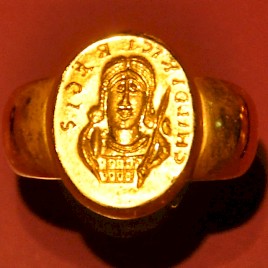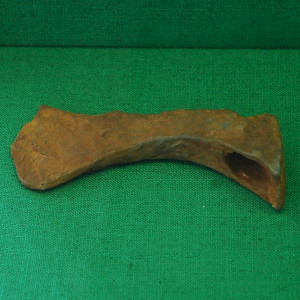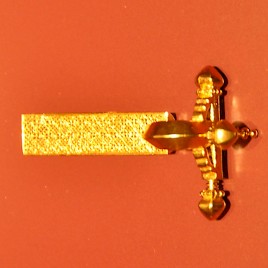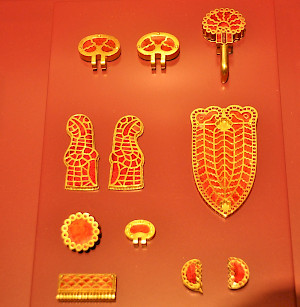Childeric
Childeric: governor of Gallia Secunda, king, and founder of the Merovingian state in northern Gaul.

Childeric, son of a Frankish leader named Merovech, may have come to power in around 455, and was confronted by the chaos that went hand in hand with the disappearance of the Roman administrative structure from western Europe, a process that is usually referred to as the fall of the Roman Empire. Those who were holding office started states for themselves and we know from a letter that Childeric's career started as governor of the old province of Belgica Secunda.note This is the western part of modern Belgium and the northern part of modern France.
More to the south, a man named Aegidius was in control of Lugdunensis Quarta and other parts of Central Gaul. In 457, Aegidius sided with a new emperor in Italy, Majorian, who wanted to restore Roman control in Gaul. Aegidius hired Frankish allies. A treasure of coins from Lienden in the Netherlands, discovered in 2017 and dating back to the reign of Majorian, proves that Childeric paid local Frankish leaders. In other words: Childeric’s network was strengthened with money from the Late Roman network.

However, Majorian’s attempt to restore Roman power came to nothing and he was killed in 461. This was the end of Roman influence in Gaul. Still, the ties between the Franks and Aegidius had been created and in 463, Aegidius could employ Franks in a conflict with the kingdom of Tolosa in Aquitania. This post-Roman state was ruled by an elite of Visigothic descent. Although Childeric is not mentioned, he may have been among the Frankish warriors fighting for Aegidius.
Childeric’s presence in the south is attested in the year 464: according to the Life of Saint Genevieve, he besieged and captured Lutetia (modern Paris). He did not keep the city: after c.465, Aegidius’ son Syagrius started to push back Childeric to the north. Now an ally of a local leader named Paulus of Angers, Childeric again fought against the Kingdom of Tolosa and on another occasion, he attacked Saxon pirates in the valley of the Lower Loire.

All in all, Childeric expanded the horizon of the Franks: Central and West Gaul were now within reach. (This is confirmed by archaeology: in the second half of the fifth century, people in the country north of the Seine were increasingly often buried with a type of sword that was used by the Franks.) Roman government had collapsed and sovereignty was now in the hands of new leaders.
Childeric may have died in 481 and was buried in his residence, Tournai. Among the grave gifts – which were discovered in 1653 and stolen in 1831 – was a fibula of a very rare type, used by the highest Roman officials only. Childeric was buried with his horses, which was a very German custom. His ring identified him as rex, “king”. In other words, the founder of the Merovingian dynasty and creator of the new independent kingdom was both a Roman and a German.

Scholars have argued that the sacrificed horses and the treasure of gold found with the grave prove that Childeric was a heathen, because a Christian would not have been buried with such objects. This conclusion is, however, questionable: we know of comparable burials of baptized German leaders (e.g., Sutton Hoo). Nor does the fact that the Life of Saint Genevieve calls him a pagan prove very much: it is just part of the portrayal of the besieger as a dangerous enemy.
Nothing prevents us from accepting that Childeric was, like so many Romans of Germanic descent, a baptized Christian. There is in fact a strong positive argument: his tomb was next to a church.